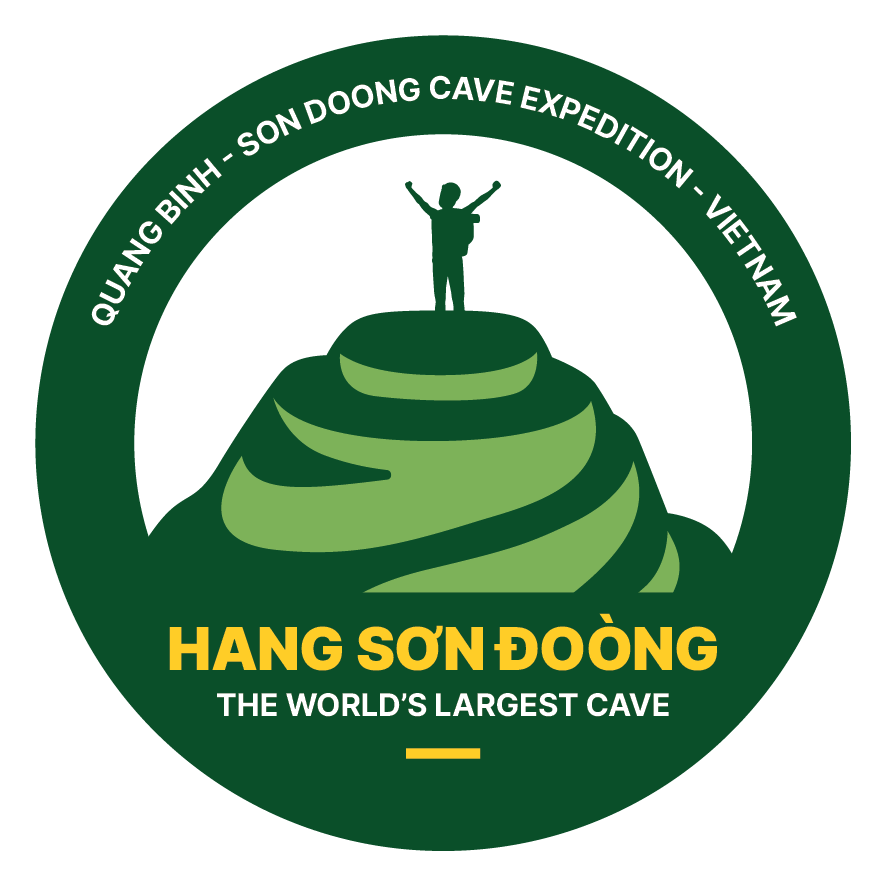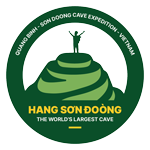Hidden deep within Son Doong – the world’s largest cave – are two colossal sinkholes of breathtaking beauty and uniqueness: Sinkhole 1 – “Watch Out for Dinosaurs” and Sinkhole 2 – the “Garden of Edam.” These aren’t just remnants of ancient geological processes; they are rare places where sunlight pierces the cave’s darkness, allowing plant life to thrive and forming distinct ecosystems. With mist-filled forests and waterfalls cascading from the cave ceiling, these sinkholes are standout features that captivate both scientists and nature lovers alike.
So what exactly are Son Doong’s sinkholes, what makes them special, and how can you explore them? Let’s find out!
What is a Sinkhole? Why Do They Matter in a Cave System?
A sinkhole is a special geological formation that often appears in limestone regions. A sinkhole forms when the cave ceiling—thinned over millions of years by underground rivers—collapses, creating a funnel-shaped depression with a narrow opening and wide base, sometimes hundreds of meters deep.
Sinkholes not only fascinate geologists but also play a vital role in shaping and sustaining life inside caves. They allow sunlight to enter, forming natural skylights that enable plants to grow and rare underground forests to emerge. Additionally, waterfalls often originate here, helping regulate humidity and temperature. The unique microclimate inside these zones even supports endemic species, something virtually impossible in completely dark cave environments.
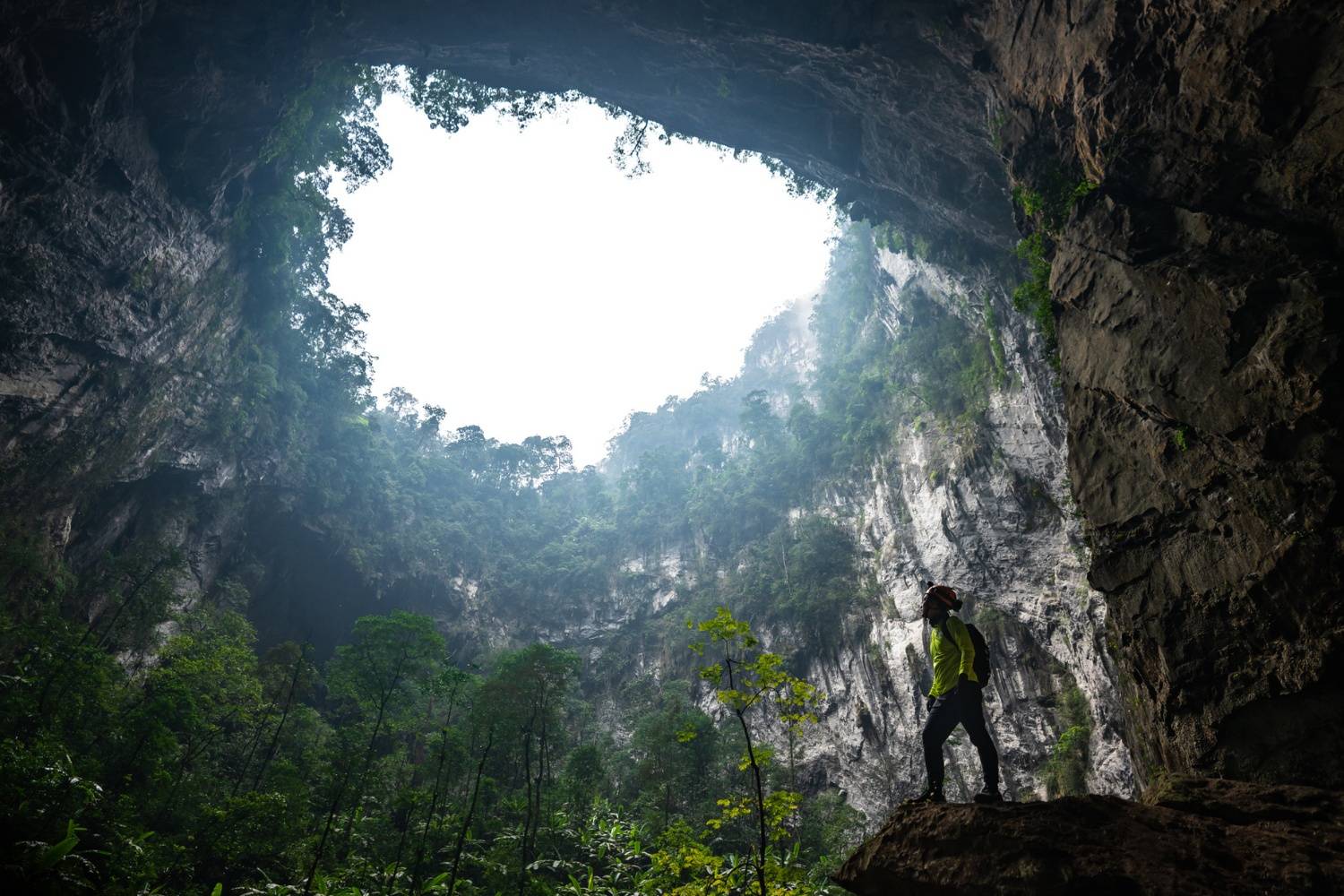
Overview of Son Doong Doline
Son Doong Cave, located in Phong Nha – Ke Bang National Park in Quang Binh Province, is the largest cave in the world. It was discovered in 1990 by local man Ho Khanh. With a length of over 9 kilometers, an average height of 200 meters, and a width of around 150 meters, Son Doong is large enough to house a 40-story skyscraper.
One of the most remarkable features that contributes to Son Doong’s global fame is the presence of two enormous sinkholes, known as Doline 1 and Doline 2. These dolines were formed approximately half a million years ago due to the collapse of the cave ceiling. Thanks to these openings, sunlight penetrates deep into the cave, illuminating areas that would otherwise remain in eternal darkness, and creates a unique ecosystem and microclimate inside Son Doong.
From this, two isolated jungle-like environments emerged right beneath the earth’s surface, filled with lush vegetation, lingering mist, and a diverse ecosystem. These dolines not only offer breathtaking landscapes but also open up opportunities for scientific research and the exploration of life in an extremely unique environment.
Son Doong Doline 1 – “Watch Out for Dinosaur”
Doline 1, located about 3 kilometers from the entrance of Son Doong Cave, is regarded as one of the most iconic highlights in the journey to explore the world’s largest cave. It was formed when an underground river slowly eroded the limestone beneath the cave, causing the ceiling to collapse over time. This created a massive inverted V-shaped skylight piercing through the darkness below.
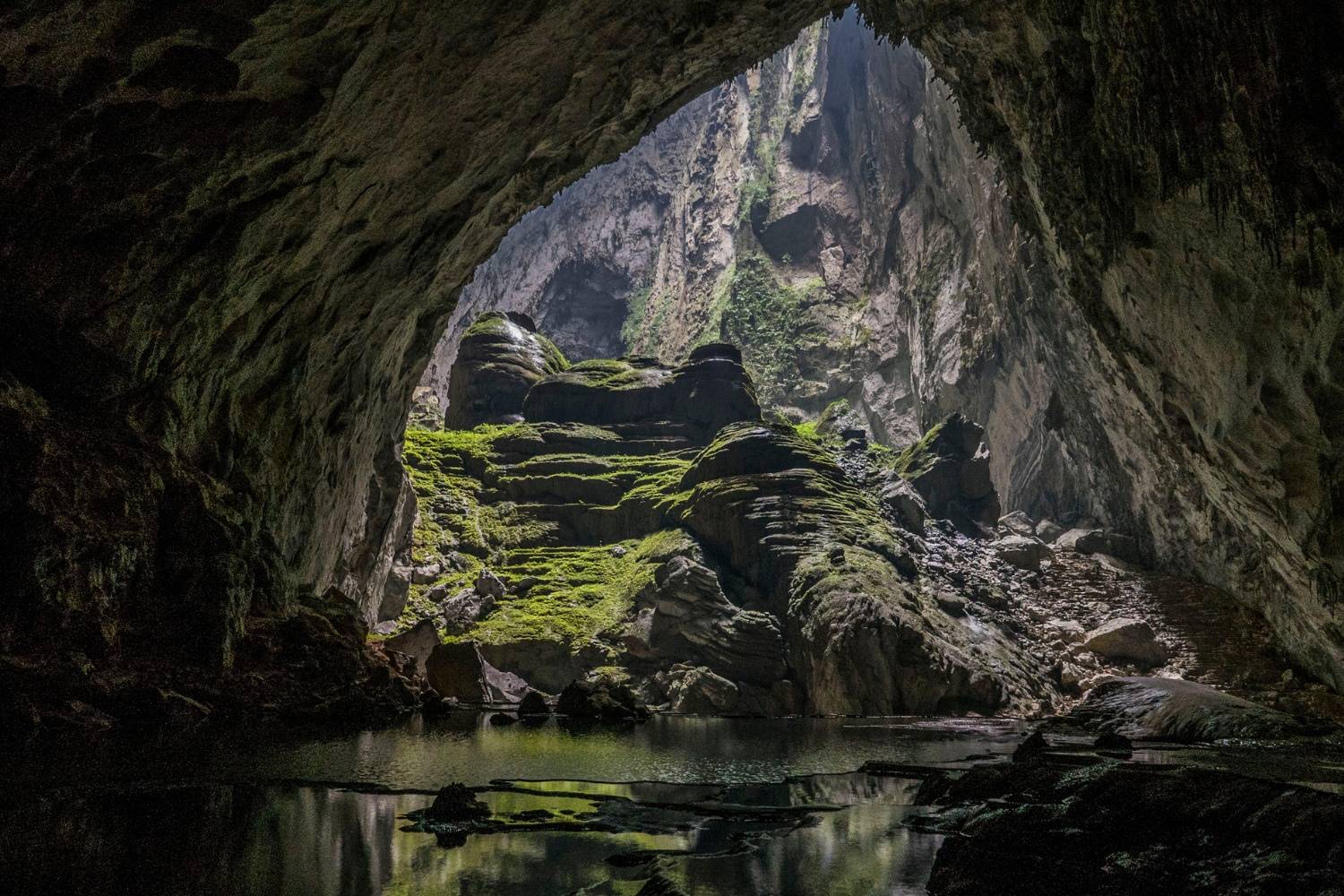
According to measurements by the joint British–Vietnamese Expedition team, the vertical depth from the edge to the base reaches 449 meters, and this is also the point where the underground river disappears from Son Doong. The widest part spans 125 meters, allowing sunlight to easily penetrate deep into the cave.
Doline 1 was discovered during the 2009–2010 expedition. The nickname “Watch Out for Dinosaur” came from a British expert’s joking remark upon seeing the untouched landscape—he imagined his child shouting, “Daddy! Watch out for a dinosaur!” The name stuck, evoking images of a prehistoric world.
Between 11 AM and 1 PM, sunlight shines directly into the doline, mixing with mist to create a magical scene often likened to stepping into the world of Avatar. At its center stands the impressive “Wedding Cake”—a giant, flat-topped stalagmite that has become a romantic proposal spot and a filming location for Alan Walker’s music video “Alone Part 2.”
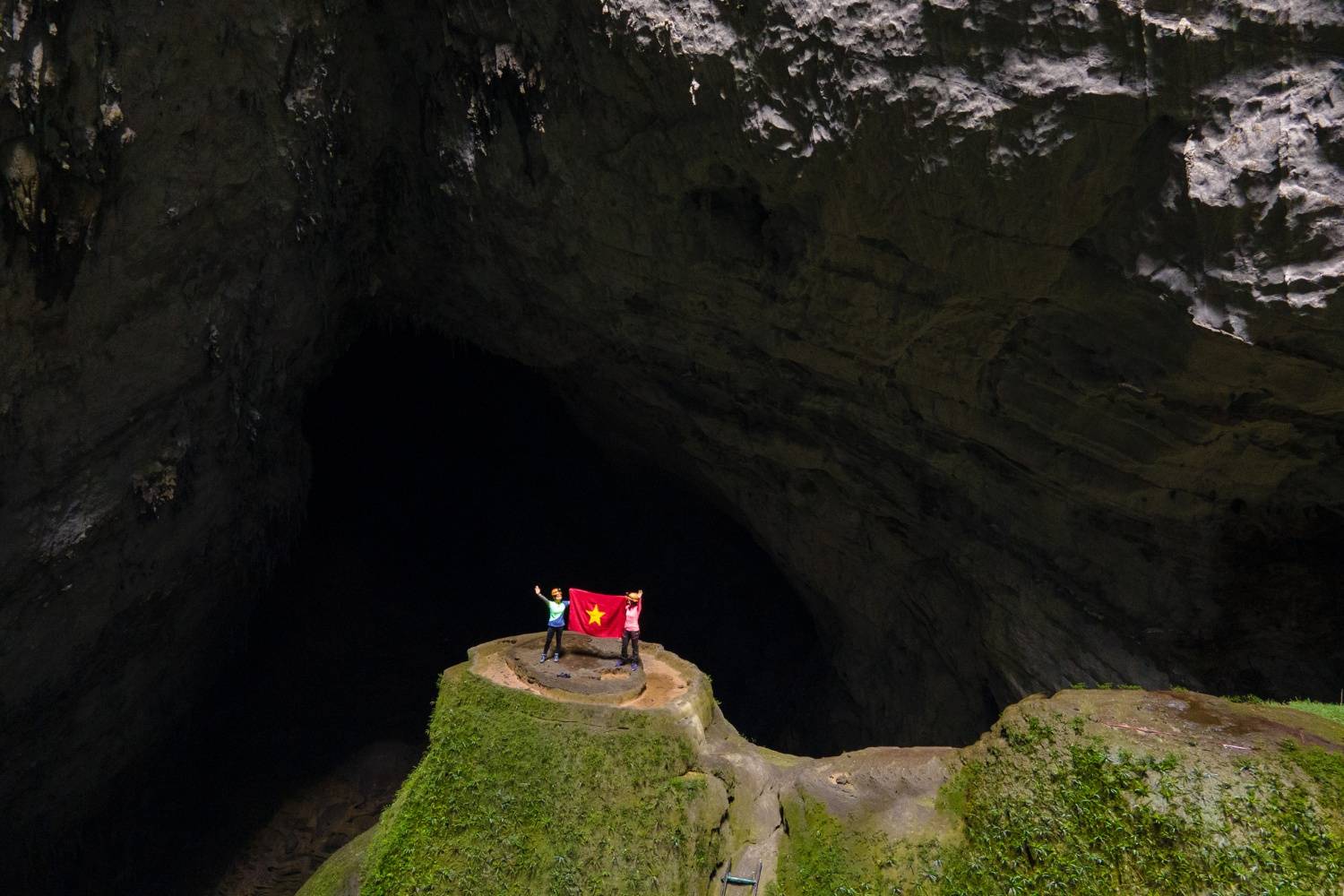
Surrounding the doline are stunning geological formations such as gour pools—terraced calcium-lined basins covered in vivid green algae when exposed to sunlight. Especially remarkable is the presence of phytokarst, a rare speleothem formed by light-seeking bacteria and algae that carve surreal, artistic shapes into the rock. To preserve these delicate structures, visitors must take a detour around the area.
This is also a popular spot for explorers to rest, have lunch, drink tea, and capture photos, while enjoying the cool air and surreal scenery. When the sunbeam slowly cuts across the doline, it feels like stepping into a science fiction movie—majestic and dreamlike.
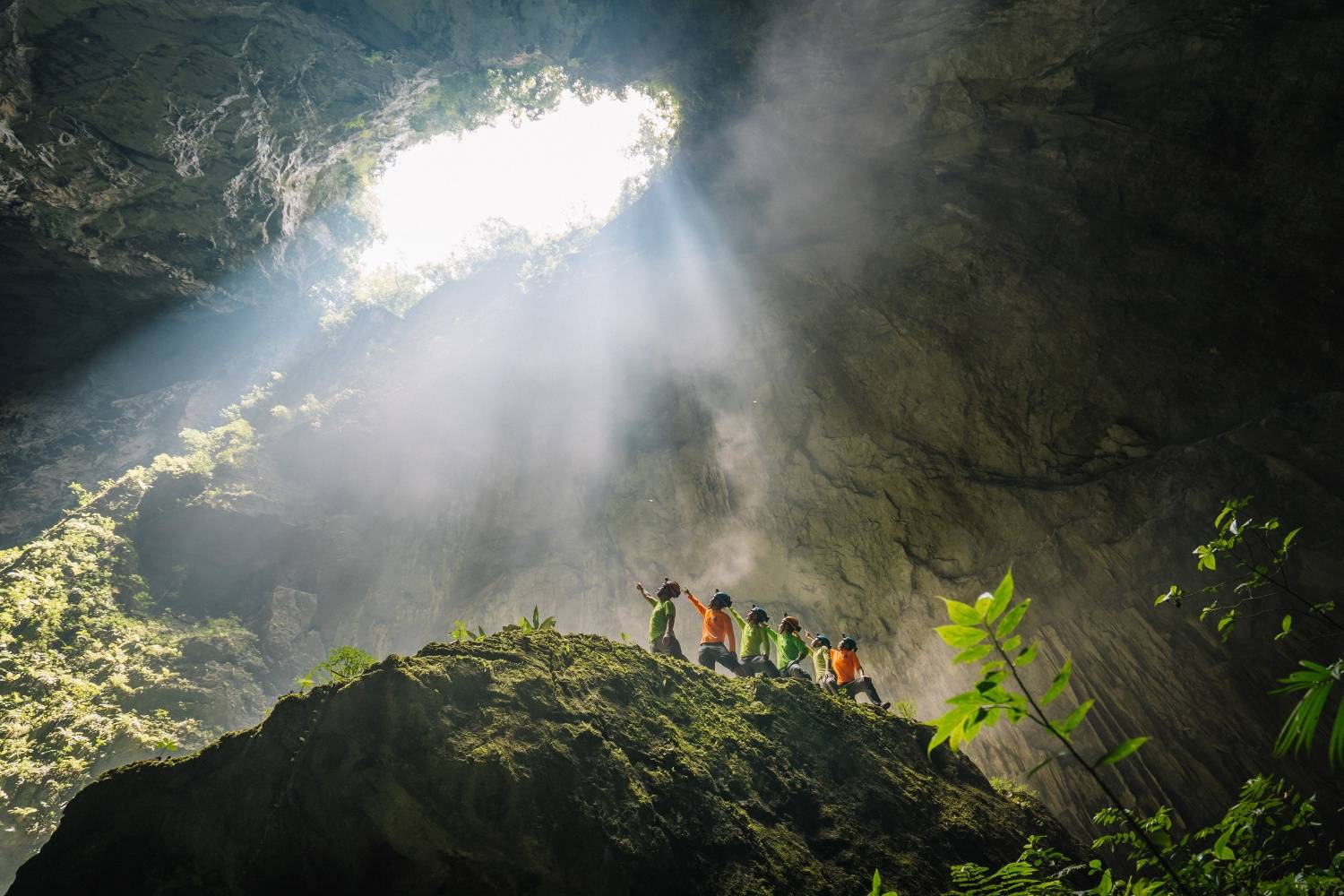
Adding to the enchantment, waterfalls cascade from the rim of the doline to the cave floor below, producing vibrant sights and sounds. As sunlight filters through the mist and falling leaves, the doline becomes a lasting symbol etched into every adventurer’s memory. Due to its challenging terrain, expedition groups must divide into smaller teams to carefully traverse the area.
Son Doong Doline 2 – The Garden of Edam: A Hidden Underground Forest
Located just about 1 kilometer from Doline 1, Doline 2 is one of the most legendary sites along the expedition route through Son Doong Cave. This doline, like the first, was formed by the collapse of the cave ceiling after millions of years of limestone erosion by underground water. But what makes Doline 2 truly exceptional is the presence of a lush, primeval forest, thriving deep underground in a place where life seems impossible.
Doline 2 was discovered in 2009 by explorers Helen Brooke and Adam Spillane. At first, they named it the “Garden of Eden”, but later changed it humorously to “Garden of Edam” to avoid religious associations. Upon first witnessing the bright and vibrant scene, some experts even mistook it for the cave’s exit due to the strong sunlight and the uncanny resemblance to above-ground landscapes.
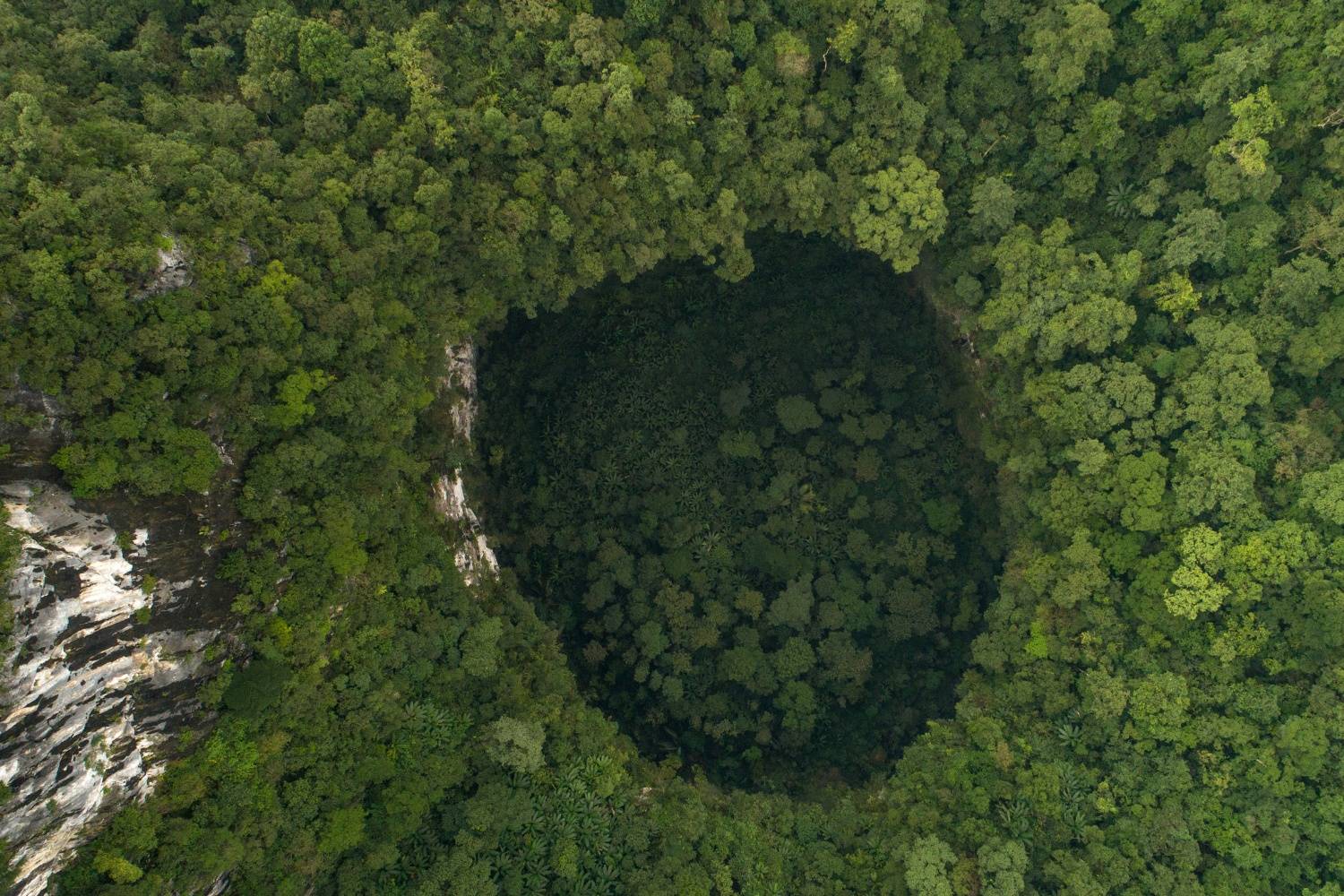
According to the British–Vietnamese exploration team, Doline 2 has a vertical depth of approximately 252 meters from rim to base. With stable sunlight and nutrient-rich soil—accumulated over centuries from bat guano—the doline supports a self-contained ecosystem. Many of the trees here grow slender but can reach heights of 40–50 meters, a result of stretching skyward in search of light under constrained conditions.
The climate in the doline is equally unique, featuring thick morning mists and lighting that shifts constantly throughout the day—sometimes by the minute—creating a landscape that appears to change before your eyes. As one ventures into areas with less light, moss, algae, and ferns gradually replace the tall trees. Cold moisture from deep within the cave often creeps outward, keeping the forest floor damp and enveloped in mystical fog. Within that haze, the beams from headlamps worn by guides are often the only visible lights.
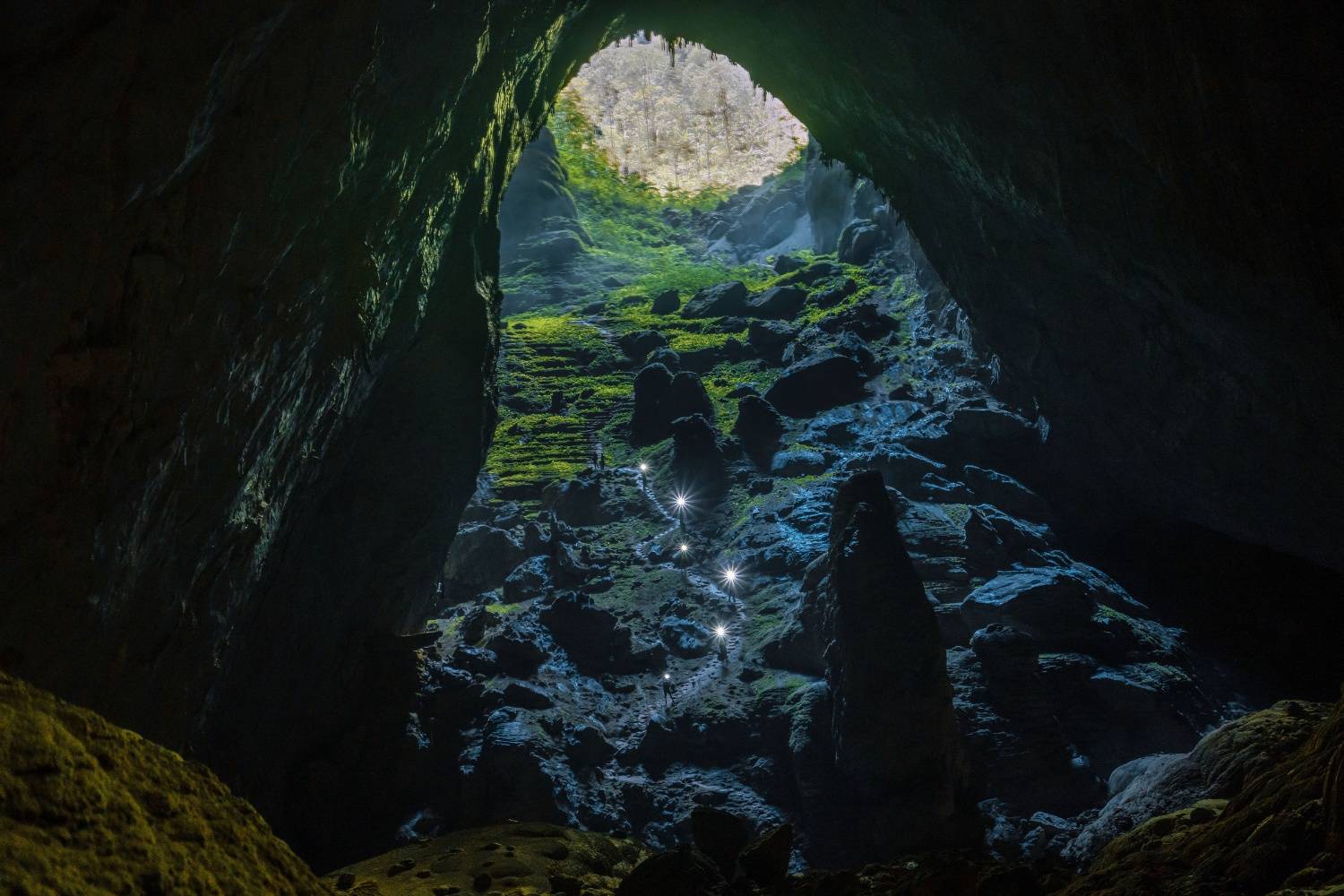
The ecosystem of Son Doong’s Doline 2 is incredibly diverse, with over 200 recorded plant species, mainly grouped as follows:
- Epiphytes: Mosses, algae, and lichens growing on rocks and tree trunks
- Climbers: Vines adapted to low-light conditions
- Shrubs: Predominantly ferns and small plants that thrive in moist environments
- Small trees: Found where some sunlight penetrates
- Tall trees: Some reaching beyond 40 meters
Animal life, though limited and elusive, includes sightings or assumptions of flying squirrels, snakes, pheasants, wild monkeys, and owls. Of particular interest is a large bird often seen circling the doline in the early morning. With powerful wingbeats and echoing calls, experts believe it could be a species of large owl, possibly an Eagle Owl.
Beneath the skylight is a dry, elevated zone – an ideal base camp site for the next leg of the Son Doong journey. Here, visitors can gaze up at the stars through the cave ceiling and witness sunlight filtering through thin layers of mist. Many explorers consider this one of the most beautiful campsites in the world – a place where wild nature and underground wonder collide.
From this campsite, on rainy days, you may witness waterfalls cascading from the ceiling into the forest below, creating a scene that is both majestic and alive. On clear nights, lying inside your tent and looking up through the doline, the starry sky unfolds right before your eyes—a one-of-a-kind experience that can only be found deep underground.
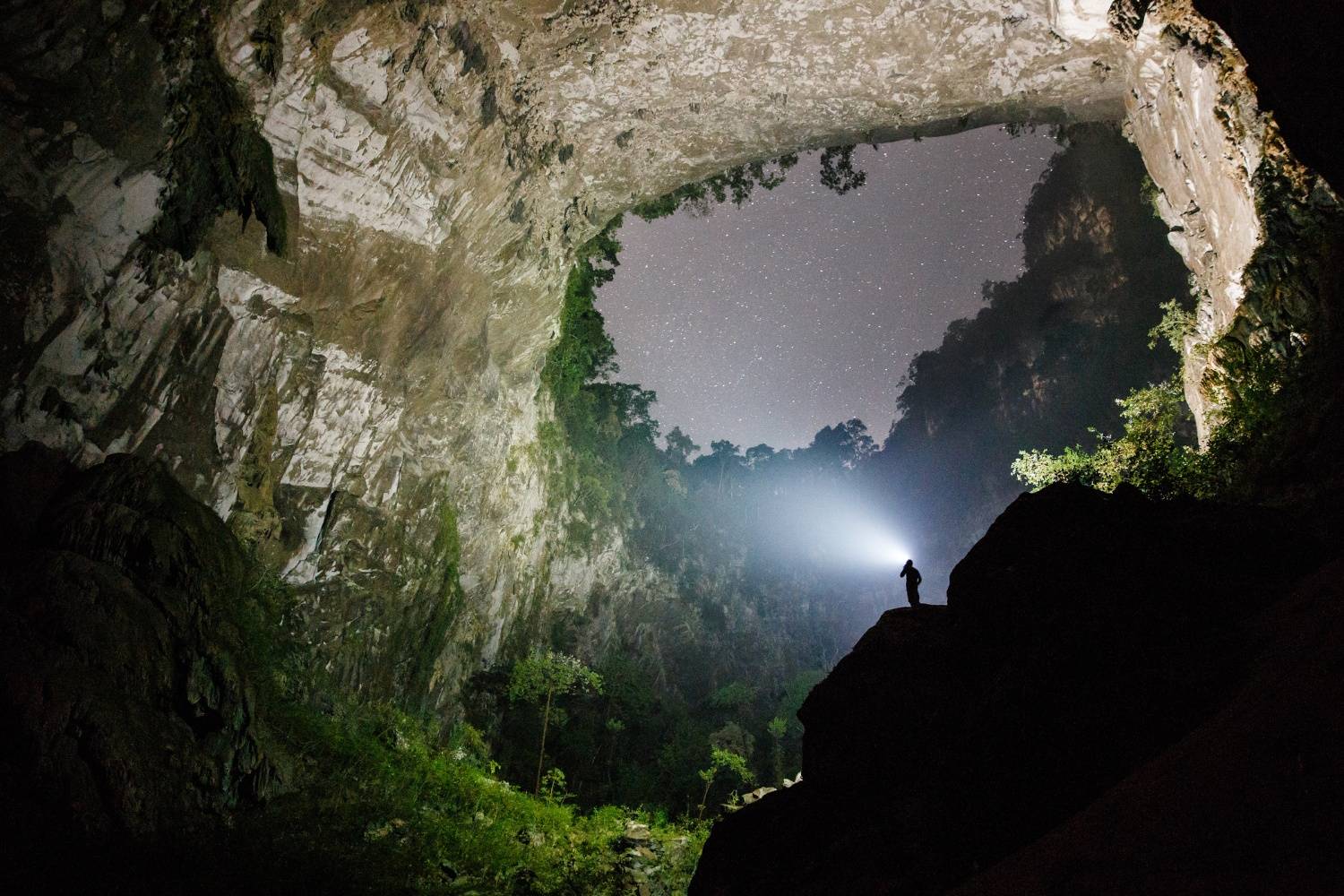
How to Visit the Dolines Inside Son Doong Cave
1. Tour Requirements
To explore the dolines within Son Doong Cave, visitors must join the official expedition organized by Oxalis Adventure. This journey spans 6 days and 5 nights, involving jungle trekking, river crossings, and climbing steep terrain with a total trekking distance of approximately 25–30 kilometers.
Due to the high level of difficulty, participants are required to undergo a health and fitness screening before being officially accepted. To preserve the environment, the tour is limited to a maximum of 1,000 guests per year.
To get to Son Doong, travelers must first arrive in Dong Hoi City, Quang Binh Province. Flights are available from major cities like Hanoi and Ho Chi Minh City. Dong Hoi Airport is about 45 km from Phong Nha. Travelers can also take a train or sleeper bus to Dong Hoi from nearby provinces.
Oxalis provides transport from Dong Hoi to Phong Nha (a 1–1.5 hour drive), one day before the tour starts. A pre-departure briefing is held in Phong Nha to prepare for the expedition.
[Click here for tour booking instructions.]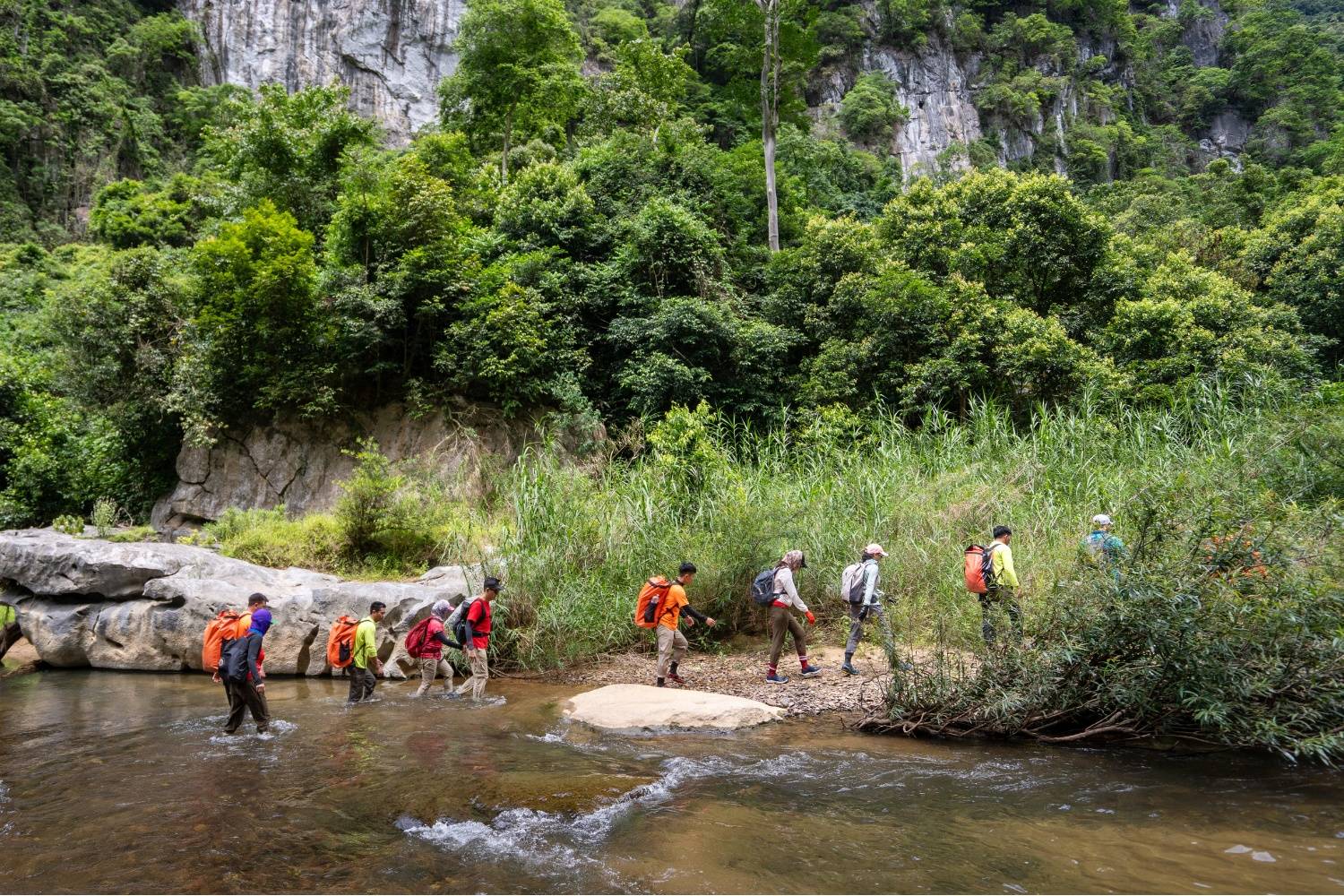
2. Pricing and Inclusions
The Son Doong expedition costs approximately 75 million VND per person (around USD 3,000), which includes:
- All meals during the trip
- Safety equipment and camping gear
- A team of professional guides and porters
- Environmental services, including waste collection and eco-protection
- All taxes and service fees
If you’ve previously joined any Oxalis tour, you’re officially part of the “Xiều” and receive a 10% discount on future trips. Moreover, when a Xiều member refers someone new to Oxalis, the referred guest will receive a 5% discount on their first Oxalis expedition.
3. Best Time to Visit
The ideal time to join the Son Doong expedition is between January and August, during the dry season. Each part of the season offers a unique perspective of the cave’s grandeur.
Regardless of the month, if the weather is sunny, you may witness the breathtaking sunbeams streaming through the cave ceiling. Every journey is a once-in-a-lifetime experience, as Son Doong’s beauty shifts constantly depending on time and perspective.
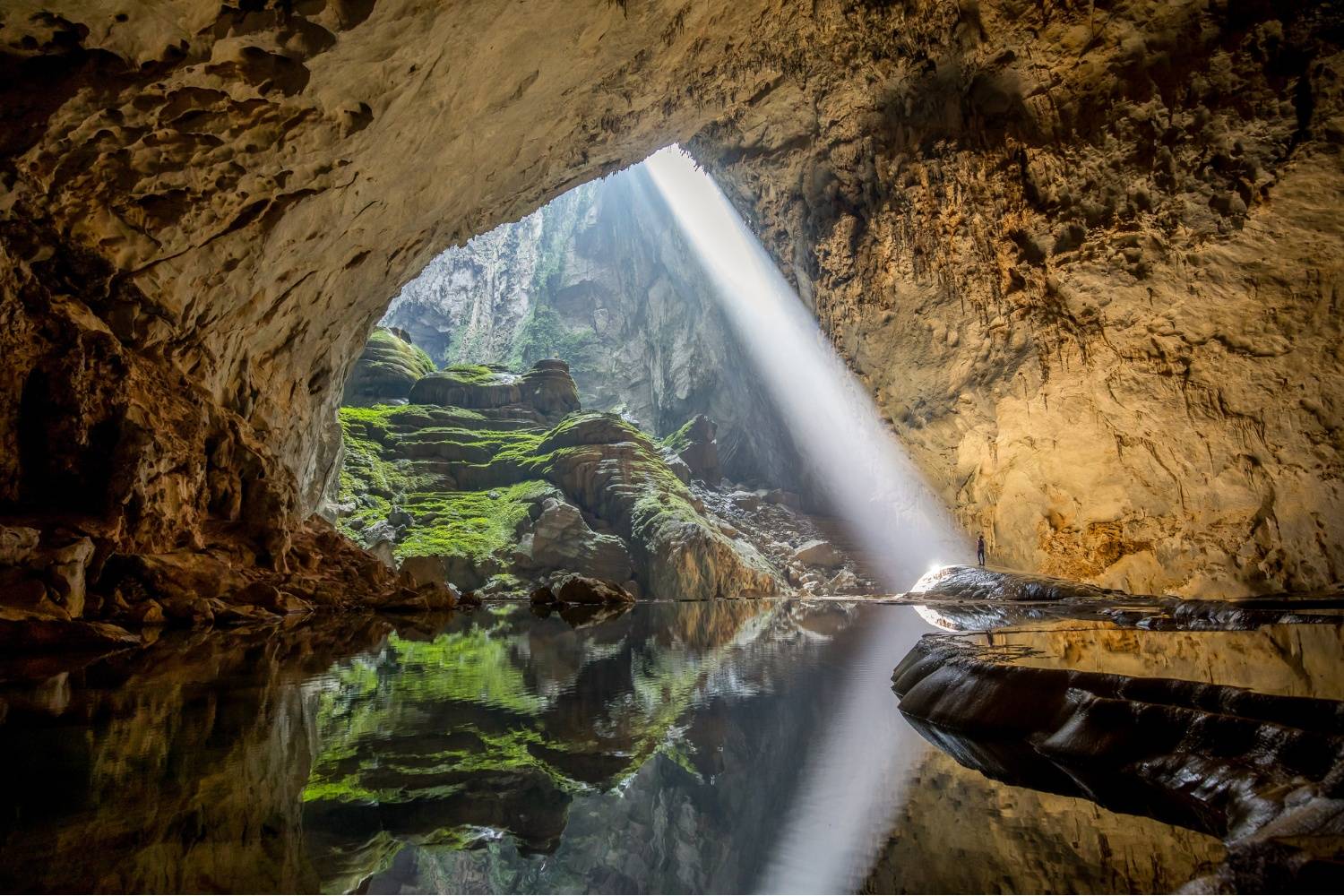
4. What to Prepare Before the Tour
To ensure comfort and safety, travelers are advised to bring the following:
*Clothing
- 3–4 sets of long-sleeve shirts and quick-dry trekking pants
- Windbreaker jacket (especially for January–March)
- Campwear: warm layers for cold weather or T-shirts and shorts for summer
- Sturdy hiking shoes with good grip and quick drainage
- 4 pairs of long socks and camp sandals
- Small backpack (20–25L) for personal items
- Dry bag for electronics
- Swimwear
- Avoid dresses, long tunics, or complicated outfits
*Personal items
- Sunglasses, hat, sunscreen, mosquito repellent
- 1–2 towels and eco-friendly toiletries
- Enough underwear, anti-moisture powder for feet
- Power bank and essential personal medications
5. Safety and Conservation Guidelines
Because Son Doong is a sensitive and pristine natural environment, visitors must strictly follow these rules:
- Do not touch stalactites, stalagmites, or any rock formations—they take thousands of years to form and are extremely fragile
- No littering, no use of chemical soaps or shampoos
- Avoid loud noises to protect cave fauna and respect other groups
- Never separate from the group; always follow your guide’s instructions
- Respect nature: do not break plants, pick flowers, or disturb the cave ecosystem
- Do not remove or move any objects from the cave
Son Doong is not only the world’s largest cave in terms of volume, but also home to two enormous dolines—Doline 1 and Doline 2—each housing its own unique and nearly self-contained ecosystem. Thanks to the light from the cave ceiling, entire underground forests thrive in this hidden world, offering profound ecological and scientific value.
Exploring these dolines is more than an adventure—it’s a rare opportunity to witness life beneath the Earth’s surface, preserved in its most primeval and untouched state.
To book a tour or speak with an Oxalis representative, visit: https://oxalisadventure.com/tour/son-doong-cave-expedition-4d3n/
